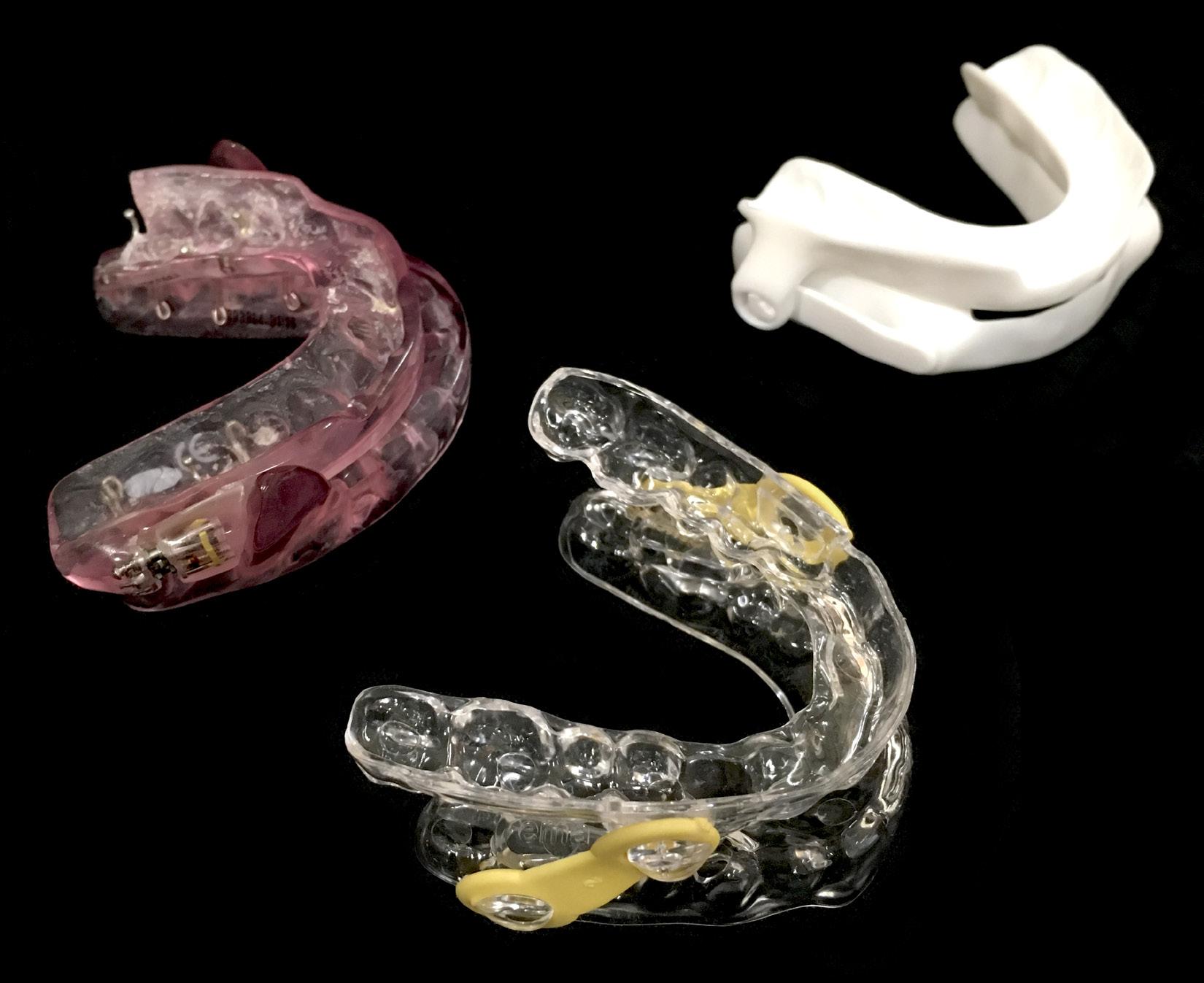
2 minute read
Breathing through apnea diagnosis
Treating obstructive sleep apnea with dental appliances
Shari Prommer thanks her lucky stars that she went on vacation with her family eight years ago.
Advertisement
Shari’s daughter, who shared a room with her, said, “Mom, do you know that you sit up and gasp for air many times during the night?” Shari says, “And I did not! I had no idea! It had never woken me up.”
Thinking about it, Shari realized she had been exhausted all day, every day for a couple of years. She never felt rested. “I couldn’t do anything. I’d go to work, come home, eat dinner and crash. I hadn’t watched a full episode of a television show in years!” But the build was so gradual that she hadn’t noticed.
Shari’s doctor diagnosed her with low thyroid function and moderate to severe sleep apnea.
Sleep apnea is when you stop breathing for 10-30 seconds multiple times in a night.
Dr. Ivonne Hernández, a professor at the School of Dentistry and a specialist in oral and facial pain at the TMD/Orofacial Pain and Sleep Disorders Clinic in Edmonton, says with available treatment options today, it’s much less scary than when she started treating people with apnea over ten years ago.
Once she was diagnosed, Shari was given a continuous positive airway pressure (CPAP) machine to try, the standard treatment for sleep apnea. She put it on the first night, and couldn’t sleep. The noise the machine makes kept her from falling asleep. She says, “You’d think I’d sleep from pure exhaustion! But the noise was in my head…”
Grumpy and sleep-deprived, she returned the CPAP to her specialist. She was told she would “get used to it,” but knowing herself, she objected and was referred to Dr. Hernández. She thought, “Why didn’t they tell me this first?!” Shari says that within 2-3 days of getting the appliance, she says, “The difference was remarkable.” Even with the improvement to her energy from her thyroid treatment. “I went to sleep and felt like I’d had rest for the first time in years!”
Hernández says that CPAP machines unarguably treat obstructive apnea, but the problem can be that patients don’t use them for a variety of reasons, including noise and comfort. She says, “The appliances also work, not as fast, but as effectively, because patients are more compliant wearing them.” The device Shari got pushes her jaw up and out so that her throat is opened and she can breathe properly all night. “I had no trouble getting used to it! It’s a bit awkward to put in, but so worth it.”
This device has kept her stable for more than six years. Lethargy and exhaustion haven’t returned. “I can make it through a full TV show now and it’s way better for work.”
Hernández says, “Every patient is different, and not every treatment option is right for everyone. In this case, an appliance worked best for the patient”.


